
I am often asked by shooters that are not "native" to airguns: "How can airguns be more fun than other arms?"
Answer is always the same: "Because they are incredibly accurate within their context"
And the next question is always: "¿Why is accuracy so important?"
To which, the only logical answer is: "Paraphrasing Warren Page: Only accurate rifles are interesting"
So, now the open question is ¿Where does one start putting together an accurate rifle?
And, as usual in the real world, the answer is another question:
"¿Accurate for WHAT?"
It is clear that the need for accuracy is different for the plinker, the hunter, the FT shooter, the Benchrest and the Match Shooter, in no particular order.
So, this week we will start a series of posts about some of the most common airgun pursuits and the guns that have suited myself or some of my friends for that specific pursuit.
Let's do a brief overlook of the whole subject and in the coming weeks, depending on how much interest there is in each specific endeavour, we will explore each one in succession.
Being and engineer, and a scientist, I cannot leave a section with some form of numerical assessment of what are the needs for each. And because I believe in scientific measurements, I will lay down the maximum size group a rifle should comply with, measured in miliradians.¿Why "mrads" and not MOA's? because they are part of the international standard units system and are widely understood in most countries. For the sake of "translation", always remember that 1 mrad is AROUND 3.6 MOA's (3.438 to be more precise).
So, let's start from the simple and then progress to the complicated:
PLINKING
A weekend plinker might be perfectly happy with "minute of soda can" at 30 yards. Or, he might want, literally, a "tack driver", meaning a rifle accurate enough to hit an upholstery tack from 25 yards. Or he might want to reach the mythical MOA group (1" @ 100 yards). It all depends on his definition of "plinking".
For general plinking endeavours probably the best suited gun is the breakbarrel. Simple, reliable, serviceable, it is the workhorse of airguns. Multiple examples can be found in the manufacturers catalogues, a few have been with us for a number of years and therefore are well known, like the Diana 34 of the picture:
The smallest can of common household consumption is about 2" X 4" (50 mm's X 100 mm's).
Usually, most plinking is done offhand; and, offhand, the average beginner shooter can hold about 1" (25 mm's) at 10 yards/meters.
With these values in mind a plinking rifle that is going to be used at 20 yards (common backyard range), will need to hold at most 1" (25 mm's) groups, to be able to tackle the round end of the mini-cans at 20 yards with good success rates. Important to keep the interest of the shooter up.
This translates into 1.13 mrads.
The tack-driver, usually a supported position game by definition, needs to hit a ½" (13 mm's) bulls-eye at 25 yards (23 meters), so that requires a rifle capable of holding groups to less than 0.5 mrads
The long range plinker, bent on shooting small groups at 100 yards (or meters), needs a rifle that can hold about 1/8 (0.125) mrad in perfect conditions because he has to contend with wind and other disturbances.
A hunter may be looking for a gun to hunt pigeons inside a tin-roofed barn, something accurate enough to shoot pigeons in the head, powerful enough to penetrate pigeons' backs/sides, and of sufficient "anchoring power" to make pigeons, themselves very strong birds, to drop dead with one shot; while still not puncturing holes in the tin roof itself.
For the purist hunter, there is little as fascinating as an outing with a pump-up gun. The ability to "vary" the power used, according to the prey at hand, plus the autonomy and the indisputable accuracy of a well tuned pump-up gun is definitely attractive:
Or he may need to dispatch larger prey. We all have our favourite definition of "pest" or "food".
When doing "Pest Control Duties", very specialized tools may be required:
Hunting with an airgun is an endeavour that is not too well understood:
Manufacturers stress Muzzle Velocity because MV sells. Writers stress "hitting power" because, usually, writers are under the sponsorship of some commercial establishment, either manufacturing or selling something to somewhat experienced airgunners that have realized that supersonic speeds seldom, if ever, go hand in hand with accuracy.
True airgun hunters stress accuracy. ¿Why? because it takes an astonishingly small amount of energy to drop a critter, IF that energy is well placed. 4 ft-lbs of energy at the target is, more often than not, sufficient for a quick, clean, humane, harvesting of food, or elimination of pest.
If you go for big game, then the situation is different, but we can come to that if there is enough interest to warrant it.
Most small game prey and pests will need an accuracy of about 1" (25 mm's) at up to 55 yards (50 meters), but the range in hunting is inversely proportional to the ability of the hunter. A good hunter will reduce the range as much as is humanly possible. That is why it is "hunting" and not "sniping". ;-)
So the typical hunting rifle should be able to hold groups of around ¼ (0.25) mrads because, again, in the outdoors, wind, light and the weather can play with the projectile.
Here comes another aspect: Real Airgunners will develop a hunting kit that will be completely impervious to weather. After all, if it rains, you do not quit and go home.
The Field Target shooter might be wanting something for his home range, where shots are well known and courses' capability for change may be limited to a few yards more or less here and there.
In this case, if he shoots within the American Airgun Field Target Association (AAFTA) rules of "Hunter Piston", he might be using a breakbarrel, a sidelever or an underlever rifle:.
If we go by the WFTF rules, the most challenging non-positional shot is the 25 mm's KZ at 35 meters; now, because of the way Field Targets work, in reality the "hole" should have its diameter reduced by at least 90% of the pellet diameter, assumming an 0.177" cal pellet (4.5 mm's), then the KZ's "real size" is 21 mm's, this yields a real HitZone of 0.6 mrads, but ideally the rifles should hold better than 1/2 that, so WFTF guns should hold groups to less than 1/3 (0.30) mrads.
If we go by AAFTA rules, then the most challenging non-positional shot is the 1/2" (12.7 mm's) at 30 yards (27 meters) that, taking into account the caliber, yields a real Hit Zone of 0.32 mrad, again you want your rifle to hold to half of that (even though under AAFTA rules you can use a harness to brace your body into a more stable position), and you come to an ideal number of about 1/6 (0.16) mrads.; in "American Parlance", this is a 60 Troyer target, and is as hard as they get. It must be added here that AAFTA does have a "WFTF" division with the two powerplant classes: PCP and Spring-Piston.
Long shots, inclined shots, steeply declined shots, windy shots, positional shots, all are harder than they sound when the light and the weather enter the equation, but seldom are FT shoots in the US held "rain or shine".
Benchrest shooters are a breed of their own and what they truly want is to experiment. So they need "platforms", not rifles. Platforms so that they can change barrels, power, MV, caliber, rest, sights, stocks, etc. It will all depend on the class they want to shoot, under which rules (American Rules are not exactly the same as International Rules) and how often they can go to Matches.
An added complication is that there have been at least 3 different BR organizations in recent times, some of them supporting airguns and others that don't. Currently, the Organization that makes the most efforts in the international arena is the World Rimfire and Air Rifle Benchrest Federation.
One of the companies actually making a dedicated Benchrest model is Steyr Sport:
The trick here is to start with some basic platform for which parts and literature are widely available and go from there, the AA S-400 and derivatives can be a good starting point, as can be the EV-2's, the USFT's and others.
These basics usually qualify for the Light Varmint International Class and therefore have some freedom of movement.
Rifles for the Heavy Varmint class are usually custom built from the action up.
Production and Sporter Classes seem to be not as popular as the other classes, but most clubs in the US active in BR will open their arms to shooters trying the game with either a production or a sporter gun.
At least one organization in the US, mainly dedicated to RF benchrest still has a "Plinker" class that accepts all comers but has a "claim" rule. If the rifle wins, then any shooter can try to purchase the rifle for US$200.00 (or more if there are several interested parties). Of course, the owner can deny the chance to sell and thereby forfeit his score and place, but it is an interesting way "to keep things honest". Not all Bench Rest Associations have this, but it is an interesting aspect of USBR rules.
Edition Note: One of the Deans of airgunning, recalled to my mind that BR targets are scored with a "gauge" or "plug". The gauge has a tapered probe that gets inserted into 0.177" and 0.20" cal. holes and a flange with a magnifying element that is 0.22" cal. This allows shooters to shoot different calibers and still shoot together. The following paragraph has been corrected to reflect this oversight on my part (Thanks, LD!):
The more prevalent BR target has a 10 ring that is 2 mm's across (with line width), to count as 10, the flange of the plug (or gauge) must cut the ring. To count as "X", then the gauge (or plug) flange must excise completely the 10 ring. An excelent note on how to use a gauge in Benchrest is given by the WRABF.
"X"s (the Roman 10's) are better than the simple 10's, as everybody knows, and those are used to break ties. Since the matches for these targets are shot at 25 meters, this translates the need for accuracy to better than 0.26 mrads. You may argue that because this is a rested type of shooting, you cannot demand your gun to hold to half of what the theoretical requirements are, but in this game of perfectionists, there is no such thing as "excess".
Weigh every pellet? Sure!, Measure every pellet's head? Sure! Roll the pellets to sort them by conicity? Of course! Invent a machine to measure the pellets without touching them? Naturally!
Besides, BR has its "indoors" and "outdoors" versions, so there is some room there for the shooter to use his abilities, it is not all about the gun.
In the more rarefied sectors, BR can be an exercise in frustration, so if you want to go there, you have been warned.
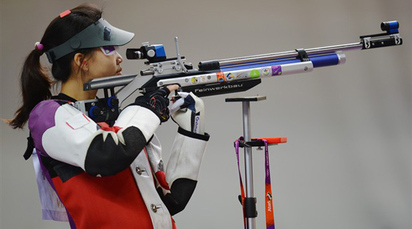
Match Shooters are a heavily regulated bunch, with the current rule book going 466 pages, of which pages 316 to 337 are used to define the rifles and auxiliary equipment; the equipment list that is "legal" is pretty specific. The pellets used are few and far between. The targets always at known distances and the sights relatively simple in their principles, but extraordinarily complicated in their execution and construction. Everything going towards the optimum ergonomics that will afford the shooter the best possibility to repeat the perfect shot 60 times (40 in the case of girls) to qualify and then 10 more to win, last three on a "duelling" basis.
The Olympic target is shot at 10 meters and the 10 "ring" is a dot 0.5 mm's across. To count as "Inner 10" (same as "X"), the dot needs to be completely punched out of the card by the pellet (which is a good reason to use wad-cutter pellets), you still need to hit a dot with the edge of your pellet to be counted a "normal" 10. Inner 10's are useful as tie breakers. (Thanks to my friend Sergio R2 for pointing out to me the change in the rules)
While Olympic style rifles seems long and nose heavy, the better part of that "barrel" is hollow and is only there to allow the longest legal sight radius possible.
Latest rules have made illegal the use of spirit levels, but in the older sights you might still find them.
So, given the size of the target and the distance, the actual "Hit zone" is 5 mm's, that over 10 meters yields an equivalent to 0.5 mrads. If you want your rifle to hold to better than 1/2 the theoretical size, then an off the bench accuracy of 0.25 mrads would be sufficient.
As we said in the begining, Olympic Match shooting is more about ergonomics than about accuracy. Accuracy IS important, but nowadays that most Olympic style airguns and ammo have achieved the needed level, ergonomics is what makes or breaks the design of the Match rifles.
As a curious aside, there is a Match version that is shot with Crossbows, these are capable of the same accuracy as the best airguns; as the same bolt is shot repeatedly, one of the elements of the accuracy uncertainty is eliminated, it IS the same projectile over and over and over again. Target is the same as the 10M Match target and rules are pretty much the same. It is great fun and a great joy to see your bolt travelling to the target and then getting stuck exactly in the center. The retriever then brings back the target with the bolt, the paper is exchanged and the carrier goes forward.
Since there is no expense for pellets nor for high pressure air, nor other expenses, 10M Crossbow is very economical to shoot and some European schools use it as their shooting form of choice.
"¿What do I want this airgun to do?"
;-)
Till next time!
Héctor Medina

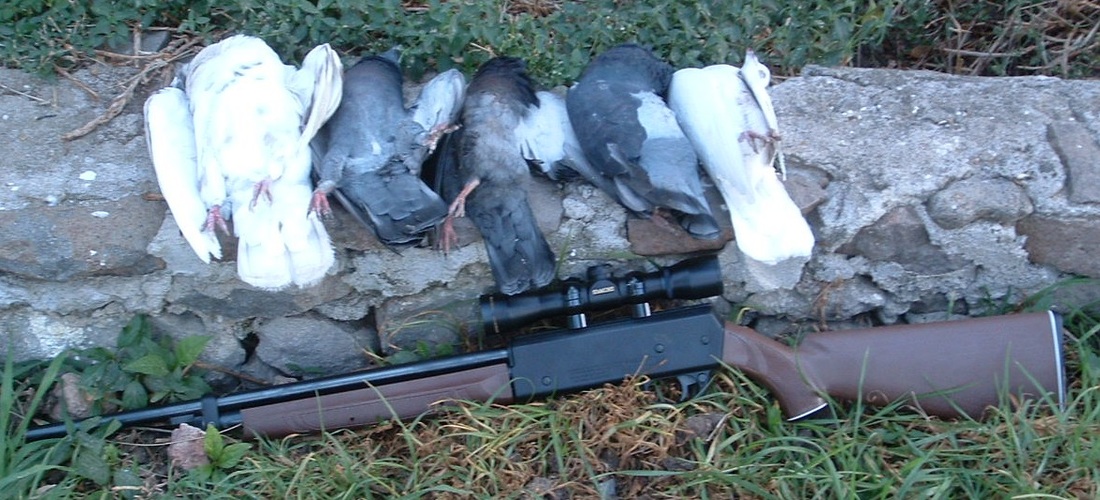


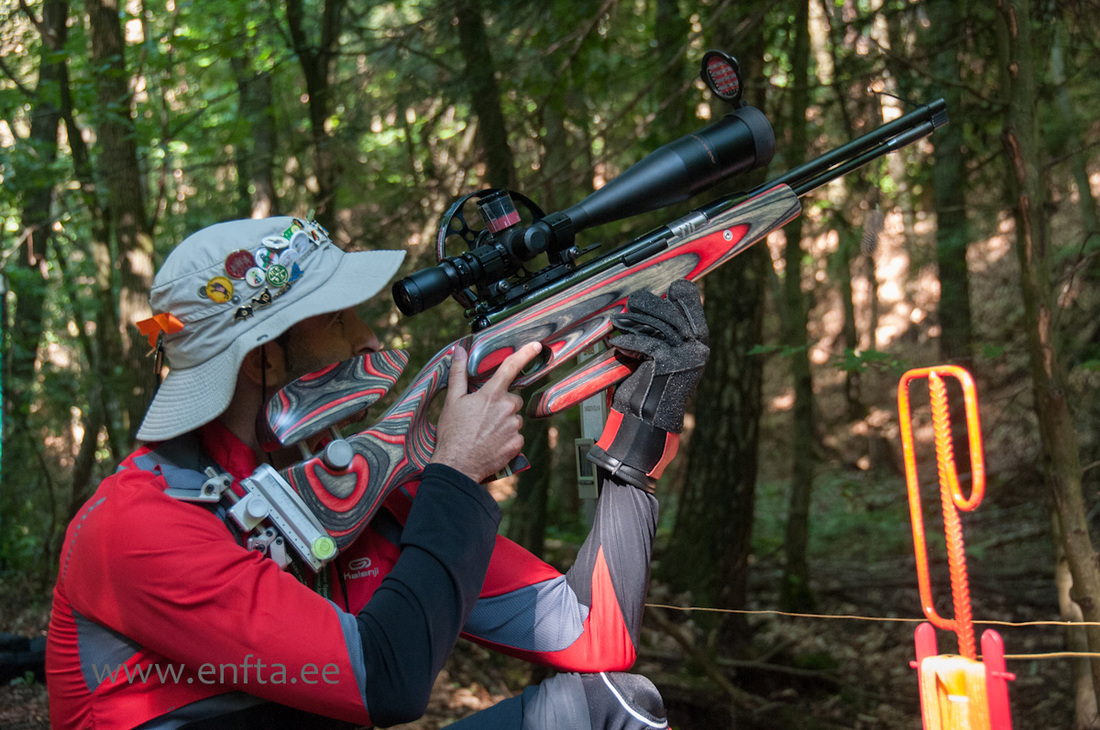
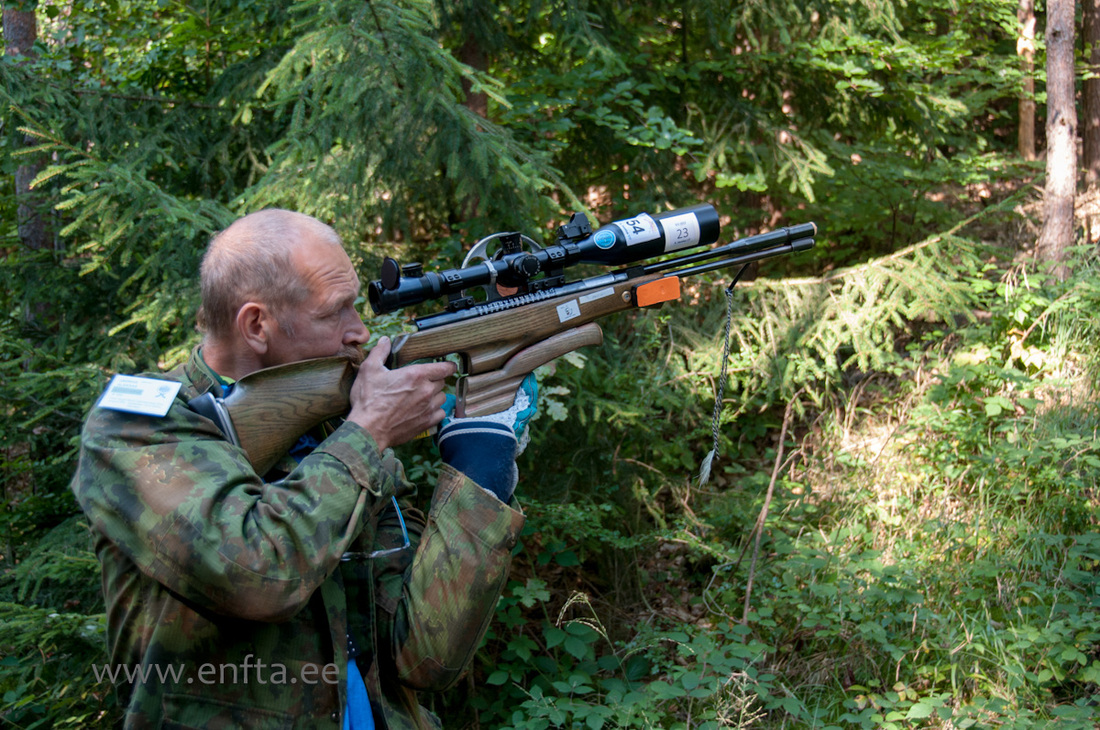
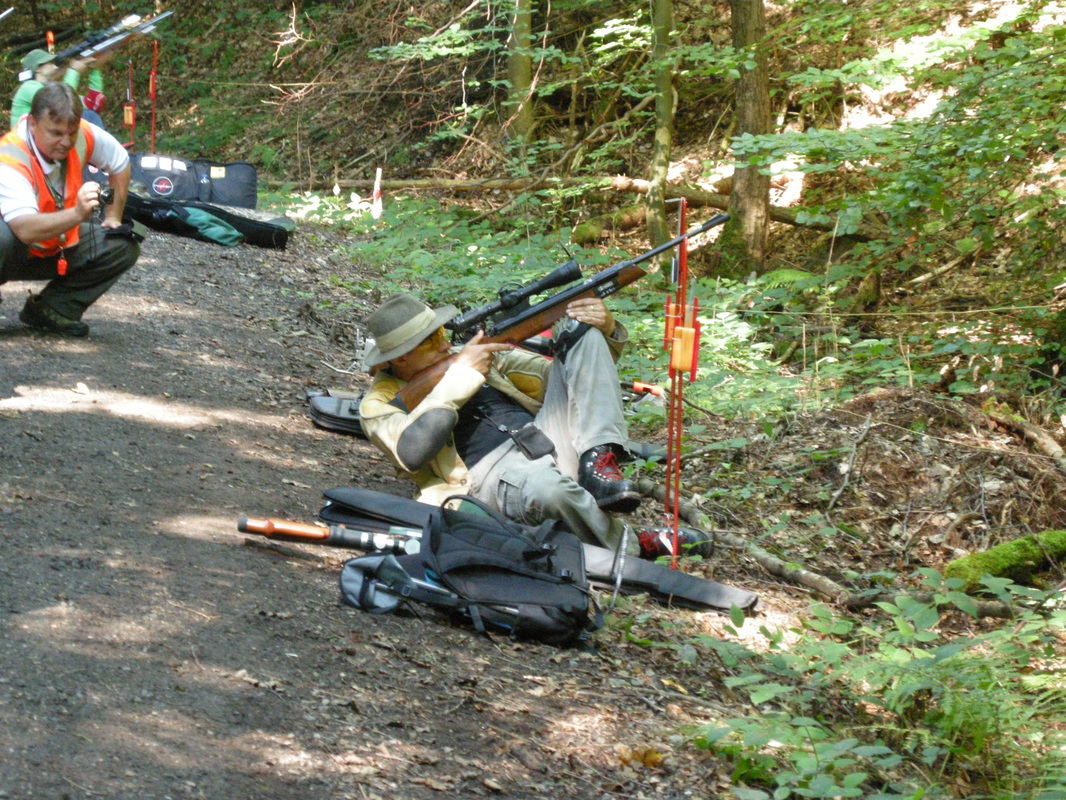
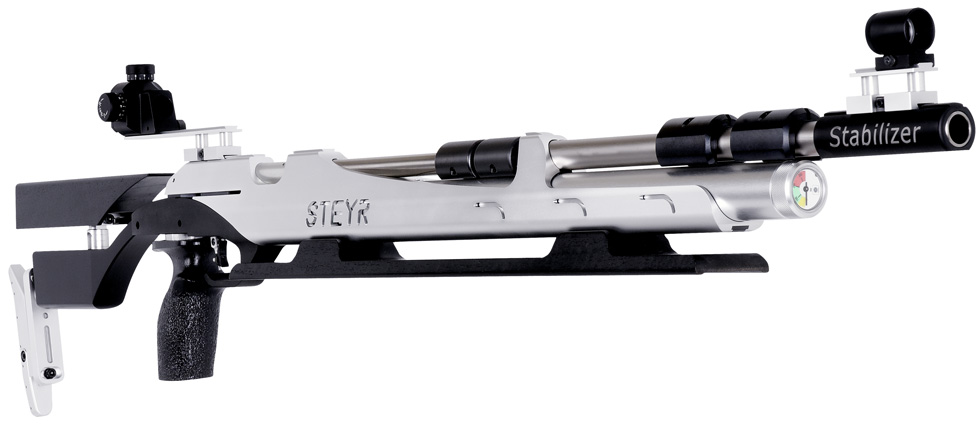

 RSS Feed
RSS Feed